Vietnam: The Food
After Cambodia, we spent almost three weeks – nearly half our time in Asia – in Vietnam, starting from the south in Ho Chi Minh City/Saigon and working our way north along the coast to Hanoi. Neither of us would hesitate to say it has been our favorite place of the last four months of travel (of the last eight, it’s competing neck-and-neck with the Canadian Rockies). Across the country people were friendly, travel was easy, and it was easy to relax and enjoy our time in lovely places.
And then, there’s the food. We’re both big fans of Vietnamese food back in the states, so we were particularly looking forward to our time eating our way through the country, south to north. We were not disappointed.
I’ve always said that if I were forced to eat one type of food all the time it would definitely be Mexican food, but I’m honestly not so sure of that anymore. Vietnamese food is the absolutely perfect combination of deep, complex flavors and simple, fresh ingredients, combined in millions of different ways to achieve entirely different things. The number of amazing and amazingly different things they can create with even just a few ingredients is incredible. It can be possible that something made of just broth, rice noodles, and mint leaves can taste like the best thing you’ve ever had, and that’s the sort of simple magic I can get behind.
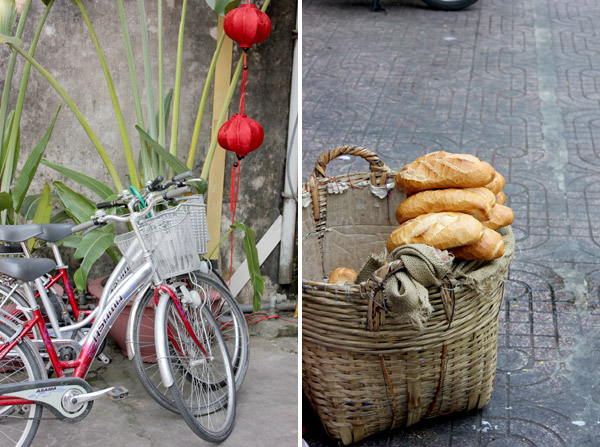
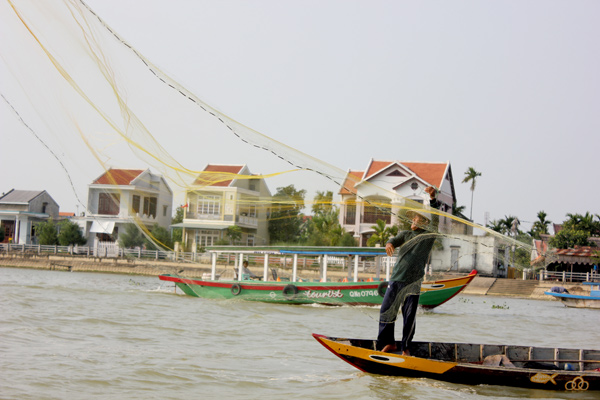

We tried to eat as wide a variety of things as we could, considering our need to have some of our most favorite things more than once, but I know there’s a lot we still missed. I suppose all those times we spent eating $1 banh mis could have been used trying other things, but each and every banh mi I ate was slightly different than those that came before it – like beautiful snowflakes – so it was all worth it. And on our second-to-last night in Hanoi, over steaming bowls of bun cha, we started planning what we’ll do (and what we’ll eat) on our next trip to Vietnam, so there will be more chances to fill in the gaps.
We loved each of the places we went in the country, each very different than the others and each featuring particular culinary specialties. Ho Chi Minh City/Saigon and Hanoi were big, urban, bustling cities, clogged with motorbikes and chaos and street food, served mostly from carts or baskets or miniscule charcoal grills, diners perched precariously on shin-height plastic stools. Nha Trang, Hoi An, and Hue were smaller, slower, and quieter, the first one focused entirely on its beach and the latter two on their historic culture and creative, artsy vibes. We tried to avoid touristy food as much as we could (impossible when we took an overnight boat trip on Halong Bay, for instance), and ate street food with abandon. More often than not we found ourselves in the sort of place with no menu to speak of, the sort of place where two fingers held in the air, two times, brought us two servings of whatever they made and two bottles of beer. There wasn’t as much seafood in our diet as we expected, but my inability to eat shrimp/prawns was a serious setback in that regard, and we probably would have found more in fancier restaurants. And in its place was plenty of pork and beef and duck and chicken, each of which we thoroughly enjoyed.

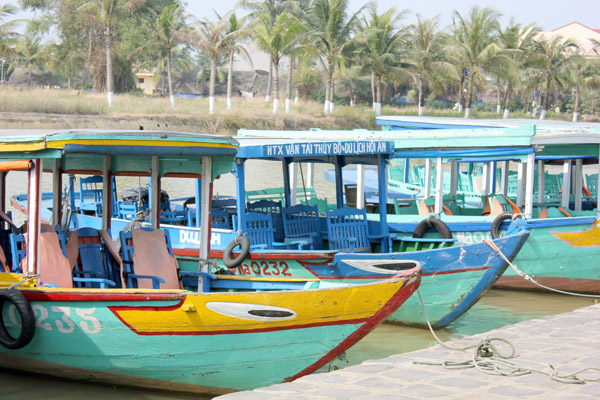
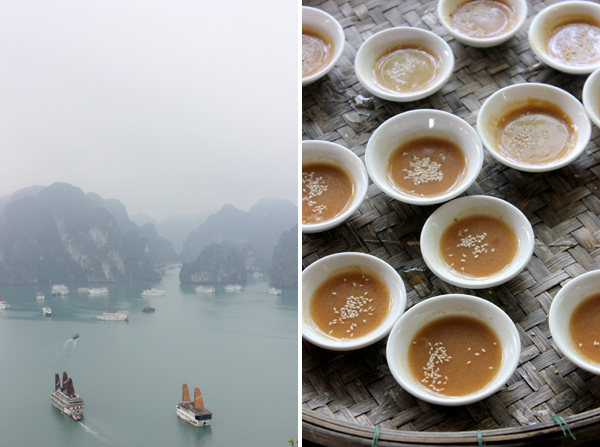
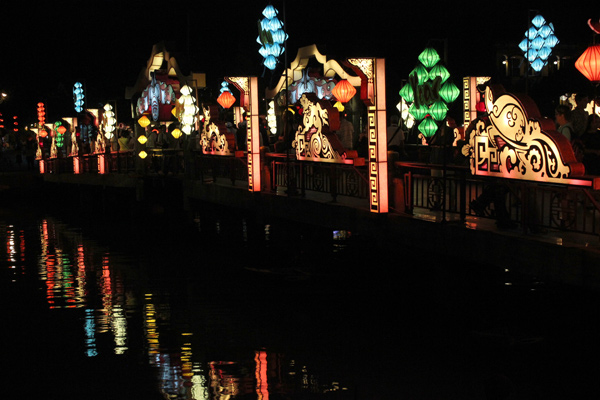
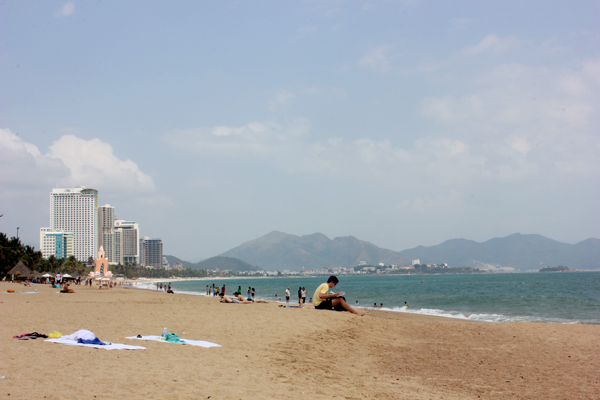

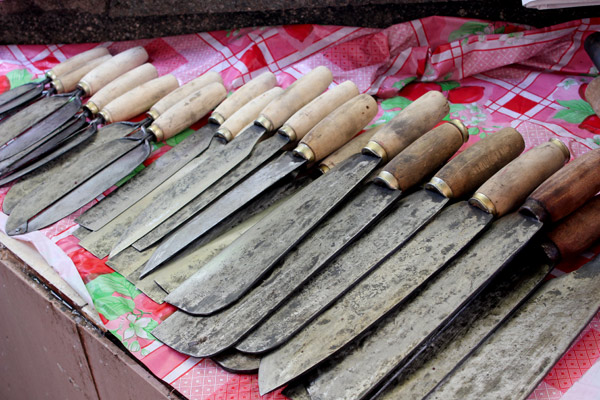
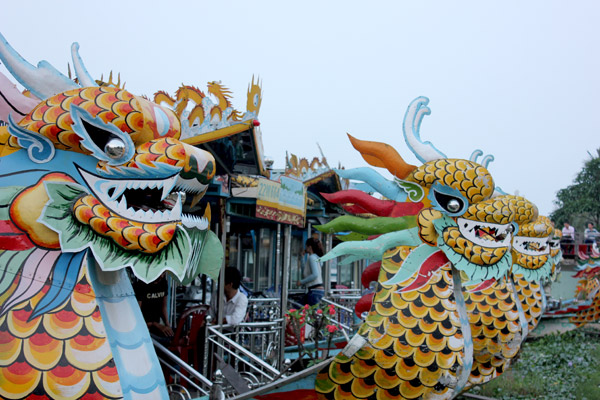
This post will be a bit unwieldy, with lots of things to say and even more pictures to share. So I’ve organized it the best way I knew how, starting with the various kinds of starch we knew and loved – noodles, rice, rice paper, steamed dumplings, bread – then talking about a few other categories of things, including beverages (oh, Vietnamese coffee, I miss you so much already, and it’s only been two days).
And this might be my last post for Asia, aside from a general “Best of” post to come after we get back. We’re in Thailand now, but only for a short five days, our last five days before heading back to the United States for the month of April (itinerary: San Diego, Los Angeles, Eugene, Davis, Minneapolis, Madison, NYC, New Orleans, Portland, Eugene – it tires me just writing it, much less thinking about it, though in reality I am far more excited than anything else). Five days in Thailand is not nearly enough to make observations about a massive and intricate culinary tradition. And, to be honest, I’m a bit tuckered out. We’re both suffering from a travel fatigue that we hadn’t really experienced thus far, and in place of our usual excitement and zeal for tracking down specific food items or going out of our way to eat something new, all we’re wanting is our idea of Thai comfort foods – spicy fried noodles with scrambled egg, green Papaya salad, creamy Massaman curry, and big bottles of Chang. So there might be some new photos somewhere down the line, but probably no “Thailand: The Food” post. Which seems crazy, but exhaustion is a dangerous thing to be toyed with, these days.
And one more little thing, actually fairly related: the March Farmer General issue came out a few days ago, appropriately enough titled “The Great Escape,” all about food and travel. My contribution – Blood, Guts, and All the Rest – is probably my favorite that I’ve written for them thus far, and I hope you like it! It’s all about the markets I’ve been to in South America and Southeast Asia, and why they’re so important for one’s understanding of food.
And now, onto the food:
Noodles and broth
Noodles and broth in various ratios and flavor combinations was a mainstay of the diet wherever we went. The more broth it contained the more traditionally it was eaten for breakfast, though most of the things I talk about below were readily available all day.
- Yes, there was pho, and yes, it was incredible. I actually had eaten pho only twice before we went to Vietnam – blasphemy, I know – but we had it quite a bit while we were there and I am fully on the pho train now. Big bowls of savory, heavily spiced beef broth (think spices like star anise, clove, coriander, cardamom, nutmeg, and the like) with rice noodles and meat (we had chopped beef, beef meatballs, each of which were cased like a sausage and were subsequently crisp and juicy and delicious, and chicken, which was vastly inferior [in our opinion]), served with mountains of bean sprouts and basil and other delicious herbs we generally could not identify. We liked it best with healthy squeezes of lime, a few spoonful of the hot chopped chilies that were always served alongside, and a few spoonfuls of liquid from the jar of vinegar-soaked garlic cloves.
- Bun bo Hue was the noodle soup of choice in – believe it or not – the city of Hue. I had a really bad head cold while were in Hue, so pretty much all I ate was bun bo Hue, loaded down with chilies to try and clear out my head. Like pho it was noodles and broth and meat (always beef, hence the bo in the name), but the broth was an entirely different flavor base, heavily infused with lemongrass and absent the spices of pho broth. Like pho, bun bo Hue was also served with lime, chilis, herbs (in this case cilantro, mint, basil, and others), bean sprouts, but also with thinly sliced banana blossoms.
- Cao lau is a noodle dish entirely tied to Hoi An – to have it, you need cao lau noodles, and to have cao lau noodles you need Hoi An water. Or at least so the legend goes, though the part about needing a certain kind of noodle is true. Cao lau noodles resemble Japanese soba noodles more than they do Vietnamese rice noodles, and their chewy texture and unique flavor make cao lau what it is. It’s those noodles, plus pork, herbs and greens, and a small bit of salty, extra flavorful broth, just enough to puddle at the bottom of the bowl, beneath the noodles and meat and greens. We ate big bowls of it at a stall in the Hoi An central market, where it was topped with bean sprouts and crispy deep-fried rice noodle bits and accompanied by chili-infused vinegar.
- Bun cha. Between this and the next dish on this list, I could write volumes. We’re both incredibly disappointed that we didn’t discover these two until late in our trip, but acknowledge that if we had known about them we probably wouldn’t have tried many of the other things that we did. Bun cha is a pork paradise, a steamy, sweet fish sauce-based broth stuffed with grilled pork in some form – the place we loved had both ground pork patties and strips of pork belly – and shavings of green papaya, alongside a plate of vermicelli noodles, a bowl of chopped garlic and chilis, and a huge pile of herbs and Boston Bibb/butter lettuce. It’s traditionally served with crab spring rolls, which Brett enjoyed but I unfortunately could not. There’s a million different ways you could eat all of this together, but mainly the point is to come up with as many ways as possible to get the broth into your mouth. The noodles soak up the broth, the pork soaks up the broth, even those silky smooth lettuce leaves pick up broth in all their wrinkles. That was an important element in particular – I’ve always loved Boston Bibb/butter lettuce, but I’ve never known how perfectly paired with something it could really be until bun cha.
- Bun bo nam bo is the other of our favorite two dishes we ate in Vietnam. It was more like cao lau in form, a pile of noodles, meat, and greens doused with just enough broth to fill an inch or two up the bottom of the bowl. It’s vermicelli noodles again, but with beef this time, sliced thinly against the grain, marinated, and stir-fried with bean sprouts. Into a bowl goes lettuce and herbs, a thick knot of noodles, the meat and sprouts, and a ladle or so of insanely flavorful beef/fish sauce broth. It’s all topped with roasted peanuts (probably the most genius part of the whole thing), crispy fried shallots, and slightly pickled carrot and green papaya. We ate it for dinner our last two nights in Vietnam. That’s how good it is.
- We had plenty of other generic noodle/broth combination dishes along the way, too. I’m sure some of them had official names, but I either didn’t note them down or never saw them to begin with (the latter is more likely). In Danang, waiting for our train to Hue, I slurped down fat rice noodles in chicken broth, packed with a good dose of roasted peanuts (and bits of chicken bone, but I’m trying to forget about that part). In Hoi An we started our first morning with huge bowls of noodle soup that came packed with fresh mint, chunks of deep-fried pork, strips of bologna, and lots of raw chopped beef (it cooked quickly in the broth). These and others all came with plenty of chili, in one form or another, and lots of garlic, if we were lucky. They were all variations on a theme – a great theme – and they were all delicious.
Rice
Strangely enough, we didn’t eat a ton of rice. Aside from the two dishes below, we only really ate rice whenever we had Generic Asian Stir-fry, which I talk more about below. We had it in other forms (which I also talk about below), but basic cooked rice was not a big part of our diet.
- Our first night in Hoi An, exhausted after an overnight bus ride that ended up causing my hellish head cold, we could only summon enough energy to make it to the little restaurant at the end of our guesthouse’s driveway. By “small restaurant” I mean a half-dozen or so low plastic tables and stools set under a roughly built canopy in the large driveway of a family’s house. It was legit enough to get a sign and a makeshift outdoor kitchen (versus them just cooking everything in their home kitchen and bringing it outside), but was certainly not a place for tourists. We had heard they served duck rice soup from another guest at our hotel, but had no idea what that would be in Vietnamese, and since no one there spoke English we just walked in and held up two fingers, the international sign for “we’ll have two, please.” They showed us where to sit and sat in front of us two steaming bowls of chao vit, duck rice soup. (This restaurant actually offered two dishes, but considering the other one was bowls of duck blood with vegetables, they made a fairly correct assumption that we wanted the chao vit.) The soup consisted of a thick, porridge-like rice soup made with savory duck broth, topped with pieces of cooked duck meat, plenty of duck skin, and chunks of duck blood pudding, plus a healthy dose of freshly cracked black pepper. Tired and beginning to feel the onset of my cold, this was about as comforting as I could have possibly gotten. And we had a good time trying to communicate with the family who owned the restaurant, each of them emerging from the house in turn to get a look at the Americans eating in their driveway. On the way out, a group of raucous (and most certainly intoxicated) young Vietnamese men excitedly made Brett take a shot of the house-brewed rice wine with them, and took many cell phone photos of them with the two of us.
- Our first day in Hanoi, we ate sticky rice with barbeque – one of two dishes we ate in the country that had great promise, but fell a little flat. The streetside restaurant we stopped at specialized in sticky rice with various toppings, and we ordered a big bowl of it topped with corn, barbequed pork, and a fried egg. Together with a healthy dose of chili sauce, how could this possibly be bad? Well, it was. Maybe not bad so much as mediocre and deeply disappointing, especially considering the potential of the ingredients individually and collectively. It was mainly flavorless and strangely textured thanks to a thick layer of yellow paste, which we went in phases of identifying as either weird mashed potatoes or weirdly pasty pork fat. All together, good in concept, bad in implementation. We wished we’d had the chance to try it again at some other place.
Dishes served with rice
- Seafood was plentiful. I’m guessing it has something to do with the country’s plentiful coastline. We didn’t eat much of it, as I mentioned before, mainly because of my shrimp allergy, but we did have around ten or so various dishes with things like scallops, mussels, clams, squid, and various types of fish. It was generally cooked in the ways you would expect – grilled with garlic and butter, stir-fried with vegetables, fried and covered with various sauces/relishes. These were all good, but nothing spectacularly notable.
- I’m not sure if this is true across the country, but at least in the central part there’s a lot of cooking of meats and vegetables in clay pots. Whatever’s inside ends up a soft, silky, steaming stew-like concoction with an Asian twist, full of savory ingredients like fish sauce and palm sugar and herbs. I had one with eggplant and tomatoes, and another of slow-braised tofu and mushrooms, and they were both perfect Asian-style comfort food.
- Unfortunately we were subject to a number of Generic Asian Stir-fries, the mainstay of tourist restaurants and tourist activities (like our snorkeling day trip in Nha Trang and our overnight boat trip in Halong Bay). In situations like these, they’re unavoidable. Lemongrass chicken, sweet and sour vegetables, beef and broccoli, etc. They weren’t actively bad, just incredibly boring – the same thing you could get in mediocre Asian restaurants across the United States.
Rice paper and rice flour
In Vietnam we learned of a whole new world of rice paper. There were the same ol’ dried sheets that I’ve used at home, steamed or soaked to make fresh spring rolls. But there were also freshly made rice paper, steamed from batter right in front of our eyes, and thin sheets eaten dry and wrapped around various things, and Jackson Pollock-esque lattice sheets that fried up into crisp shards to encase a spring roll filling. In a slightly related way, rice flour is often used to make sheets of dough or pancakes to encase sweet or savory fillings.
- I took a cooking course in Hoi An that ended up being far too oriented on giving people a fancy experience and not nearly enough oriented on actually teaching people about the food, but it was all worth it anyway because it taught me how to make fresh rice paper. We used it to make spring rolls, but it’s used in many other dishes around the country (as in banh cuon, which I describe next). Partially because it was tastier than the dried stuff, partially because I love knowing how to make everything from scratch, and partially because I particularly hate preparing those damn dry sheets, I am really excited to bring this skill home with me, and to teach it in future classes.
- Banh cuon was the other dish that felt a bit disappointing for us. It’s sheets of fresh rice paper rolled around a filling of minced pork and mushrooms, usually served with a fish sauce-based dipping sauce, slices of bologna-like pork sausage, and some selection of bean sprouts, cucumber, and/or herbs. Our was topped with crispy fried shallots, but that was probably the best part of the whole dish. Either we did it wrong or we went to the wrong place, since I’ve heard from other sources that this dish is delicious, but when we ate it the whole thing just seemed kind of flavorless. But this is another one with great potential, and I’m looking forward to trying it out at home.
- Throughout Vietnam we enjoyed spring rolls (nem), which were available practically anywhere and everywhere. We ate them fried more than fresh, usually because we were craving something tasty to eat with a cold beer, and they were filled with veggies and/or pork, glass noodles, and herbs. Once we had pork spring rolls that were basically a sausage wrapped in rice paper and deep-fried. (It was about as awesome as it sounds, after a long, hot day and alongside ice-cold cans of beer.) Only once did we have them with the lattice rice paper, which was perfect for soaking up the flavors of the dipping sauce (which was always fish sauce-based). You might notice that I don’t have any pictures below of spring rolls, but that’s probably because we mostly ate them at night (since the light is usually so bad at night I usually only take pictures of our dinners when we’re eating something really important).
- We had a number of different dishes that utilized thin, dry, flexible sheets of rice paper to wrap together a variety of ingredients. One of the ways we ate this was in banh xeo, a crispy fried pancake of rice flour and turmeric with shrimp (or other meat) and bean sprouts, eaten after stuffing it with herbs and rolling it up in that thin rice paper, then dipping it all in peanut sauce. The fried pancake itself is pretty greasy from the frying, but together with all these other elements it’s perfectly crunchy, crispy, and fresh. Another way we had this was with nem lui, ground pork lemongrass skewers available in Hue. The ground pork is mixed with all kinds of flavorful elements, then shaped around lemongrass stalks and grilled, served with greens and veggies, that thin rice paper, and peanut sauce. Into the rice paper goes pork (stripped off the lemongrass, which isn’t edible), herbs, and veggies, then it’s rolled up and dipped into the peanut sauce. In general the idea with the thin rice paper seems to be: add main thing, add herbs, dip in peanut sauce. I’m very into this concept.
- Another rice flour-based dish we enjoyed was banh goi, an empanada-like pocket of rice flour dough filled with ground pork, mushrooms, glass noodles, and pork sausage, then deep fried and served alongside a thick roasted chili sauce. I’m not sure it’s always served with that kind of chili sauce, but the one we had felt almost Mexican, and all together the entire thing was some amazing combination of techniques and flavors from various cuisines. But I’m certainly not complaining, because it was delicious and one for each of us made a perfect pre-lunch snack as we wandered around Hanoi.
Dumplings
We saw steamed dumplings – steamed dough filled with savory or sweet things – across the country, with a few specialty types in various places.
- Banh bao was the basic steamed dumpling, and was widely available from carts on the street. Our favorite version was full of ground pork and a quail egg, which would cook perfectly in the center of the meat and become the cutest little hard-boiled egg you might ever see.
- Hue has a selection of specialty dumplings available, unfortunately all featuring shrimp. I dutifully took down the names and all the details, hoping I’d be able to find a version without shrimp or that I could at least take a bite or two (my allergy is only mild), but then it didn’t happen and I somehow lost all my notes. This was at the height of my sickness, so who knows what I did with them. In any case, if you go to Hue, you should try the various types of shrimp dumpling. I hear they’re all delicious.
Bread
Vietnam’s close ties with France over the years have brought a number of French influences to their cuisine, most notably in the form of the baguette and other bread-like baked items. This is fantastic, when you’ve been traveling around mainly bread-less for a while.
- And it manifest itself in a ridiculous number of banh mi, at least in our diet. We were particularly excitable consumers of these Vietnamese baguette sandwiches back in LA, and upon arriving in Ho Chi Minh City were ecstatic to see banh mi carts clogging pedestrian traffic on almost every block. In the first week we ate them every day, at least once, especially because they were so cheap ($1 or less) and easy to eat on the go on buses, at the beach, etc. We never did find the perfect, maxed-out combination of our favorite banh mi ingredients, since each cart was slightly different, but each day was sort of a game to find the cart with the best offerings. We’re big fans of pickled vegetables and cilantro on banh mi, for instance, but it seemed these would always be available at the carts with the least enticing meat options. Across all of the banh mi we had, here’s a comprehensive list of the fillings we tried: meat/protein [barbecued marinated pork/pork belly/pork fat, shredded pork skin with fish sauce and sesame seeds (NOT my favorite, ugh), ham, bologna, hot dog, paté, omelet with fish sauce (my personal favorite), Laughing Cow cheese]; vegetables [pickled carrot/daikon radish, cucumber, lettuce, tomato slices]; spiciness [fresh tiny chilies (ridiculously spicy), chili oil, chili sauce]; toppings [cilantro, crispy fried shallots, pork thread, sesame seeds]; flavorings [fish sauce, MSG sauce]. I’d say the best one I had consisted of fish sauce omelet, pickled veggies, cucumber, chili oil, fried shallots, pork thread, sesame seeds, and (gasp) MSG sauce. I bought it on the street in Ho Chi Minh City, and it was glorious.
- Another way bread appears in Vietnam is in the form of highly French-influenced bakeries, all of which offer an impressive spread of bread, brioche, pastries, cakes, and other lovely baked things. I generally passed these by to make more room for many of the things I’ve mentioned above, but we did have a small selection of really fantastic brioches and pound cakes and other items. It appeared most of the baking staff at the more legitimate bakeries had been trained either in France or at French pastry schools in Vietnam.
Beverages
- Café culture is alive and well in Vietnam, perhaps in part due to their history with France. We made a point of ending up in cafes most every day we were there, partially because they were generally lovely places to sit and watch the world around us, and partially because we fell in love with Vietnamese coffee. We fell in love with the condensed milk version in particular, though it was available without. Either way, it’s brewed (or mixed, in the case of instant coffee) very strong, then combined with condensed milk and/or water and/or ice, depending on how you order it and in what part of the country you are. In the south it would get enough water to fill up an entire glass, where further north it got no water at all, and ended up almost syrupy thick and strong enough to fuel an army. In some areas you could get it mixed with egg white or yogurt – we unfortunately didn’t have a chance to try to the latter, but the former was amazing. As far as we could tell most of the condensed milk was mixed with the beaten egg white, which forms sort of a fluffy sweet/salty meringue on top of the thick, strong coffee, whether iced or hot. In general we drank Vietnamese coffee mainly iced, since it was so warm outside, but the warm version was just as delicious. We drank it perched on tiny plastic stools on sidewalks and from fancy cafes in the park, and from just about everywhere in between. We miss it already, and are anxious to make it once we get back home.
- The beer in Vietnam was pretty much the same as everywhere else we’ve been – light, fizzy, etc. etc. etc. – with one notable exception. Bia hoi is freshly made beer available across the country but most widely in Hanoi. And by fresh, I mean fresh – it’s made every day and sold only immediately. It’s traditionally a morning and afternoon sort of thing, and locals swear it doesn’t taste right by the end of the day. Many places don’t even have any by the evening, since they have only what they’ve made and can easily run out. But the thing is, it’s good. I don’t know how they do it, but they make it in a day and it’s flavorful and refreshing and way better than the bottled stuff. It’s pretty much only available at places that specialize in just that, though they sometimes sell some snacks and small plates of food, and usually you sit on those same little plastic stools out on the sidewalk and watch the world go by. And the kicker is, it usually costs somewhere around $0.20 per glass. I’ve heard that Vietnam actually has the cheapest beer in the world, and there’s how. Go to Vietnam, drink bia hoi. Thank me later.
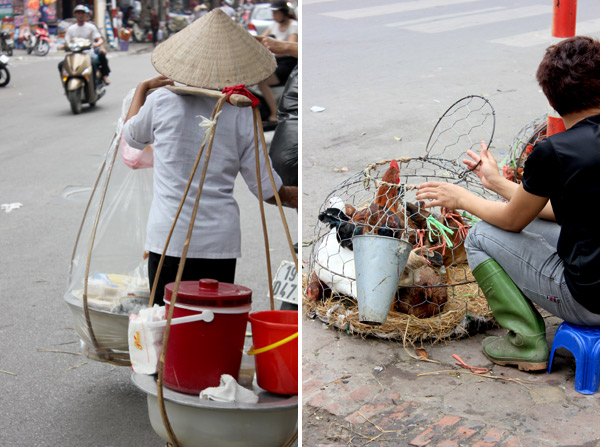
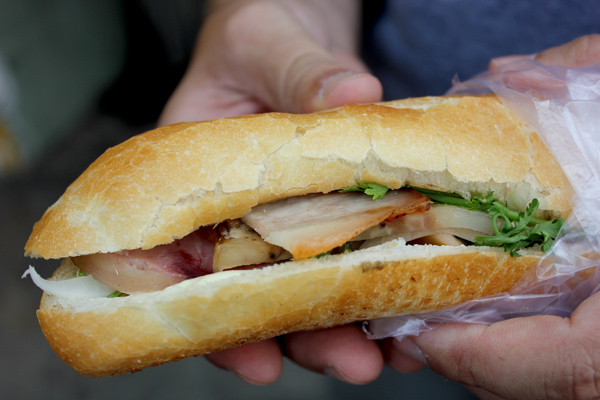
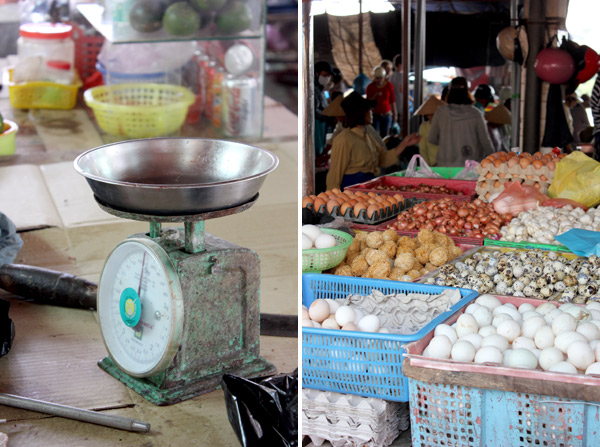
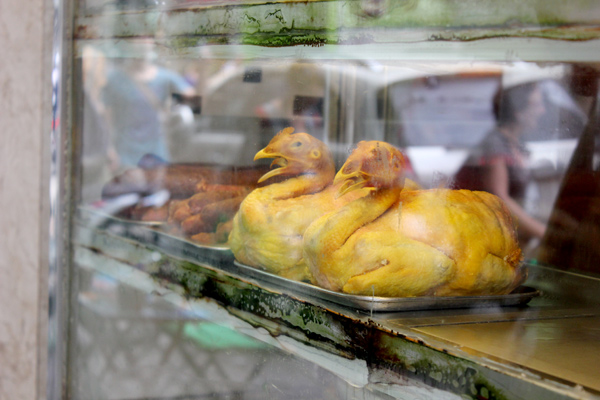
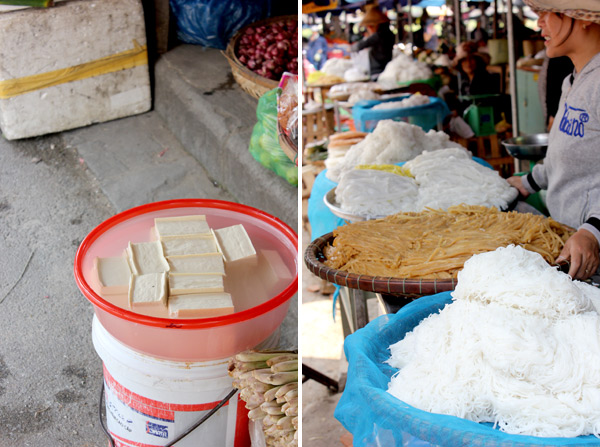
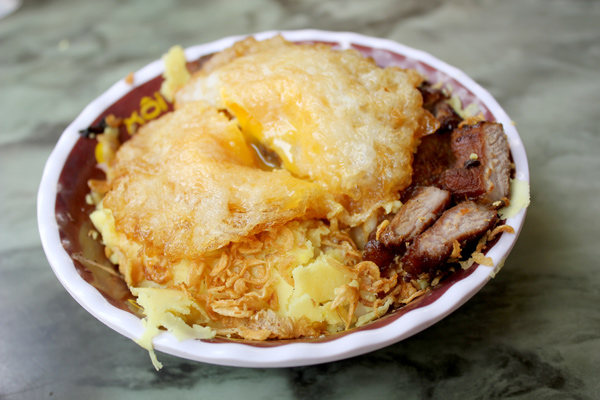
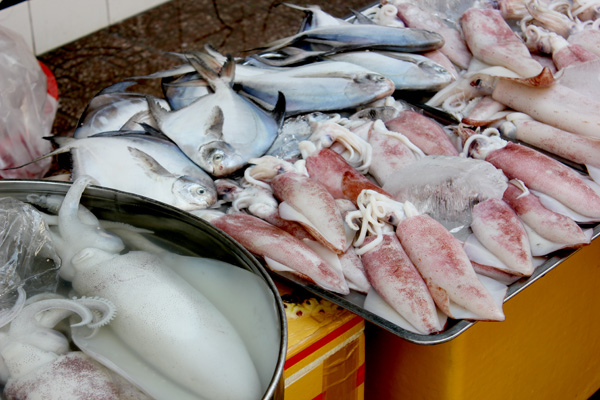
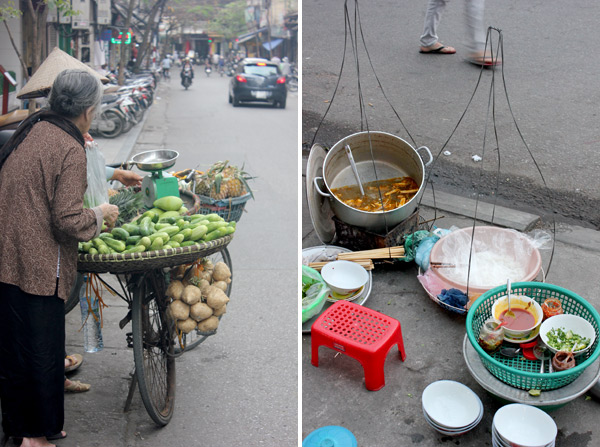
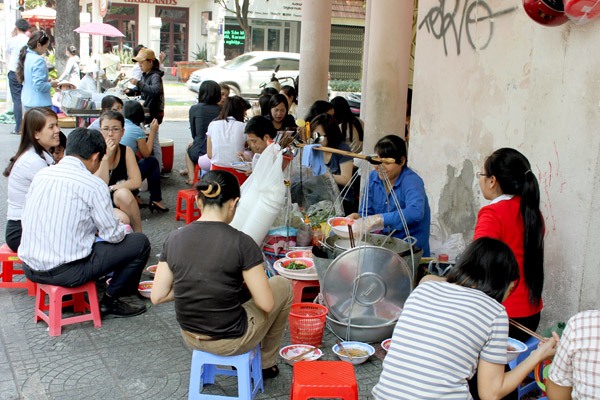
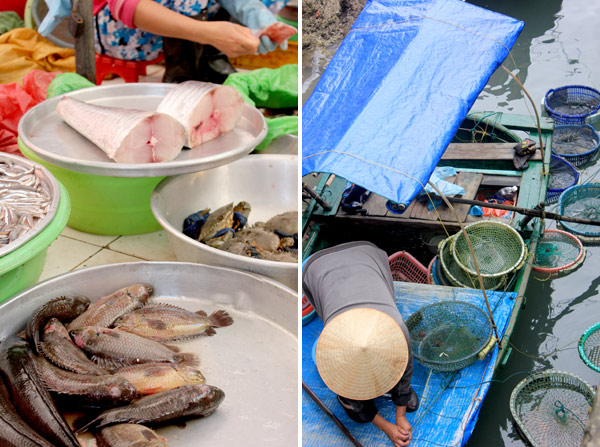
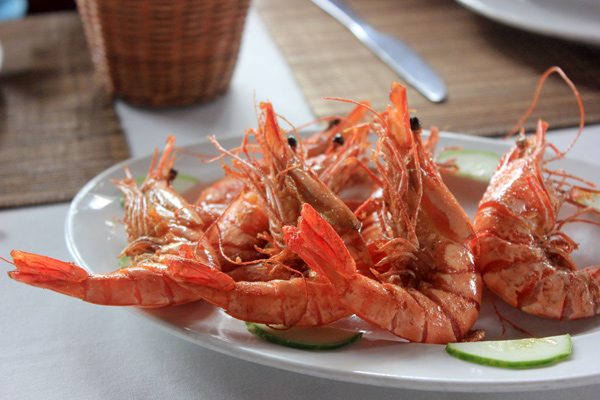
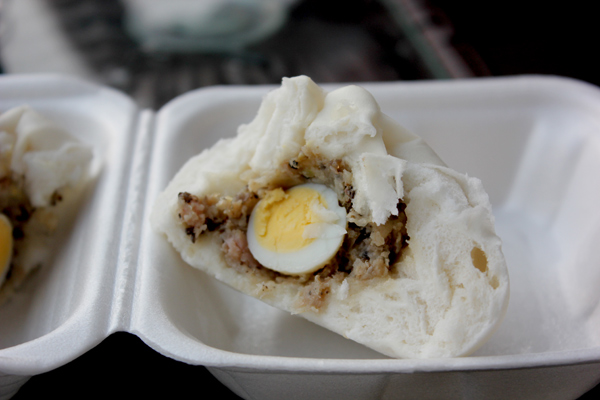
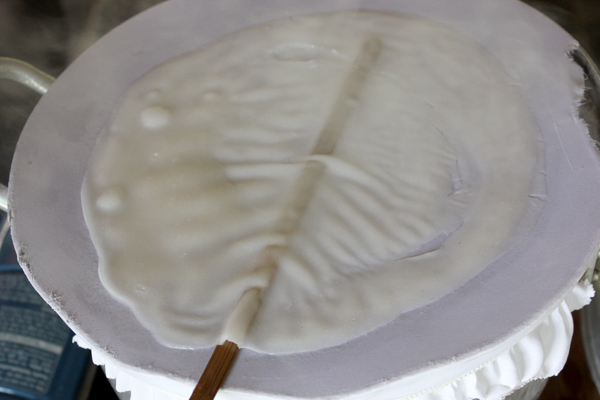
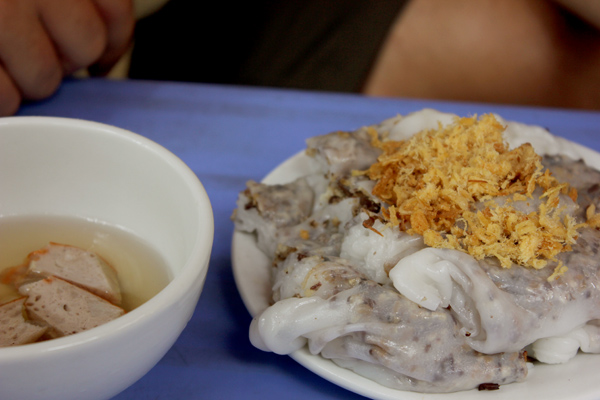
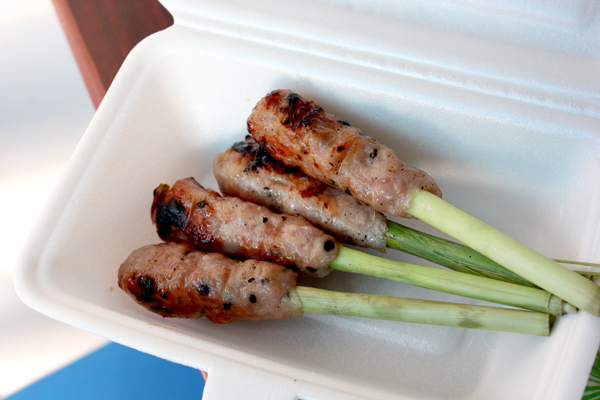

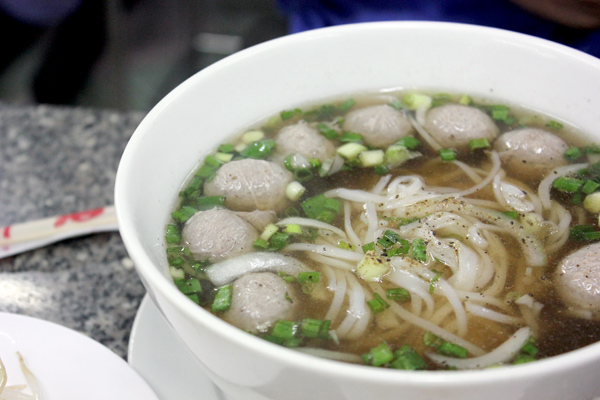
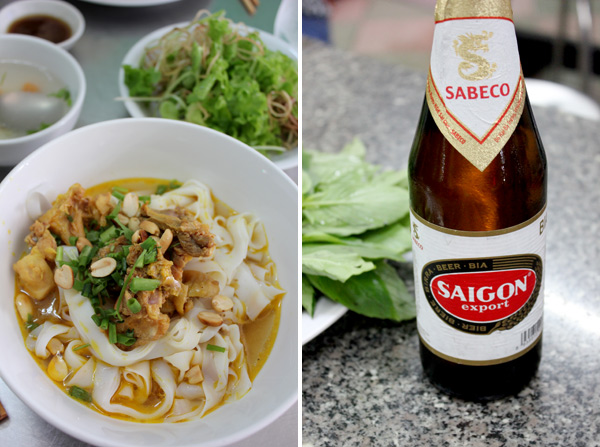
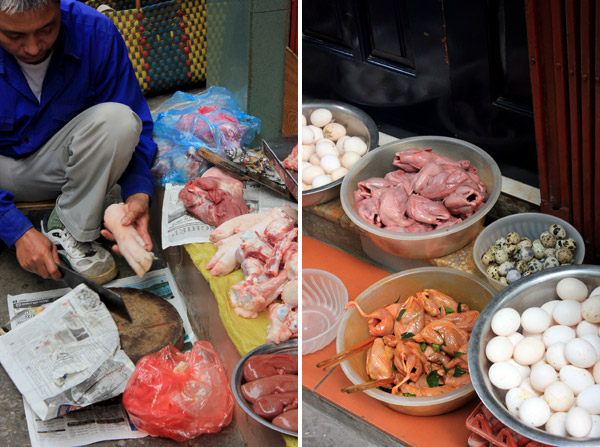
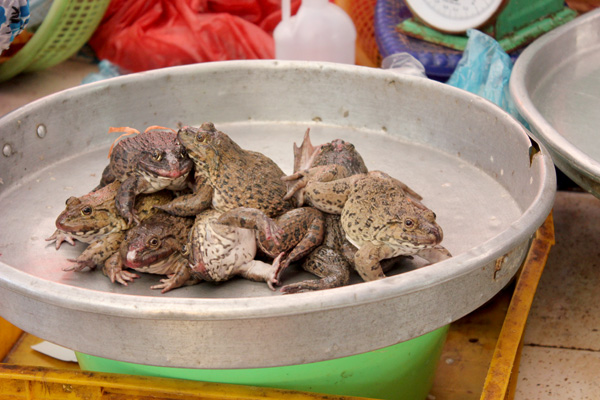
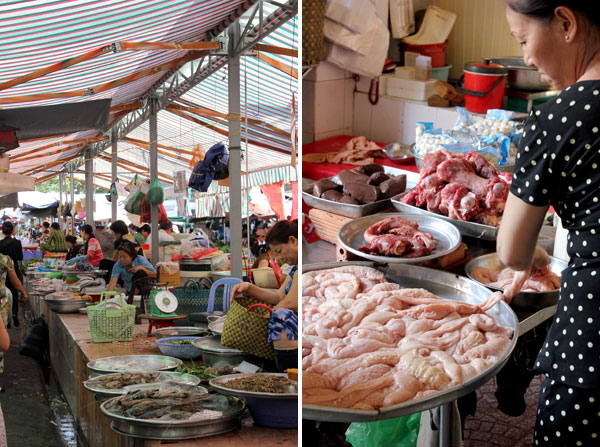
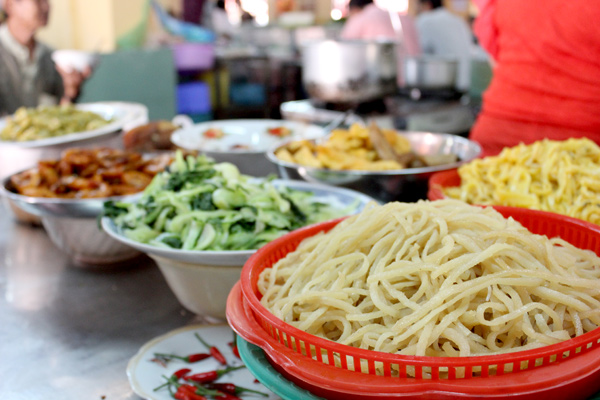
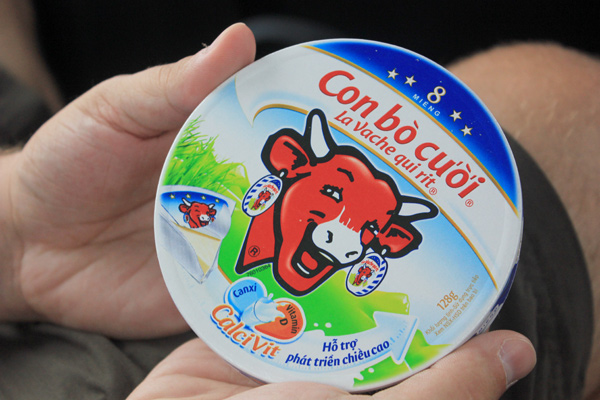
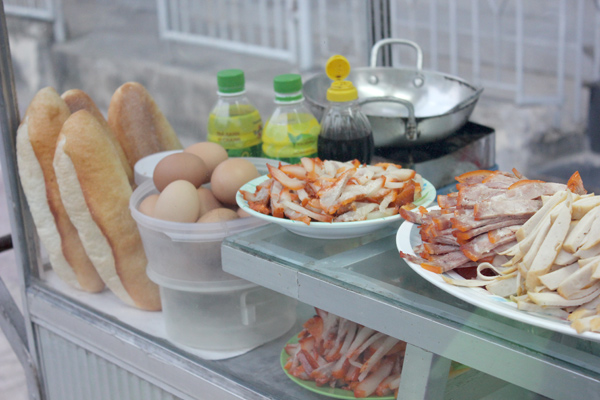
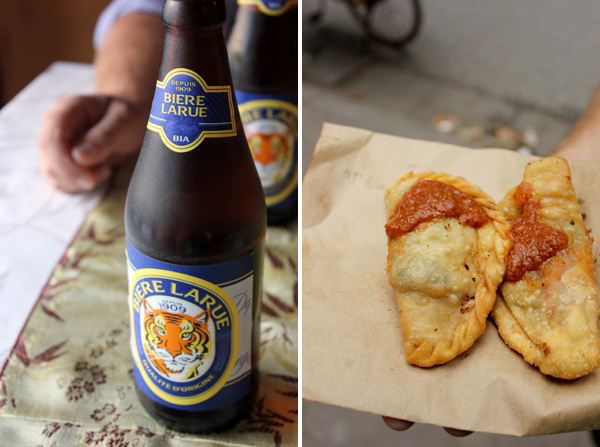
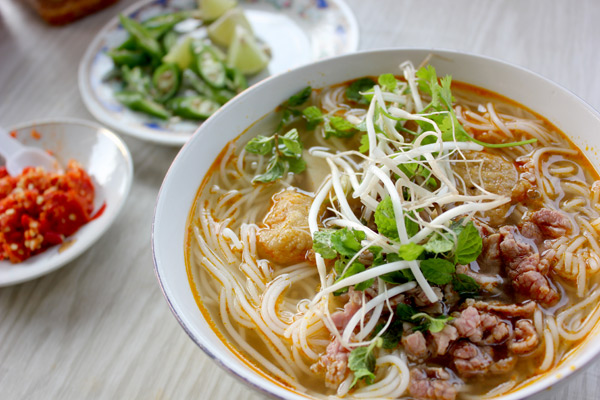
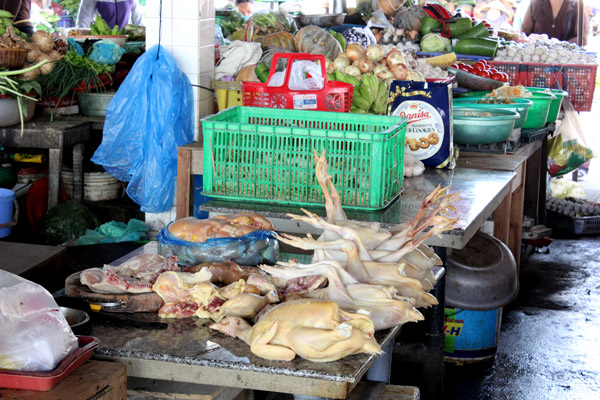
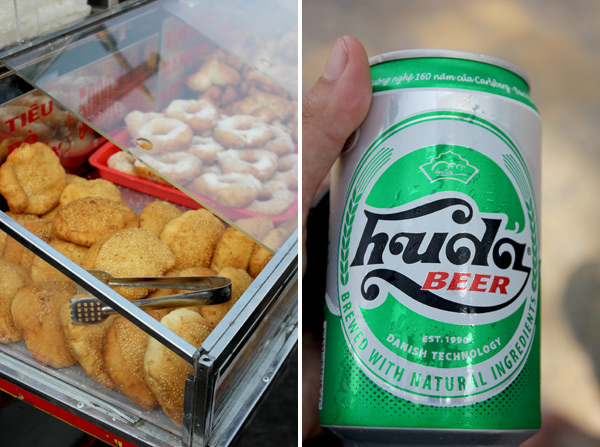
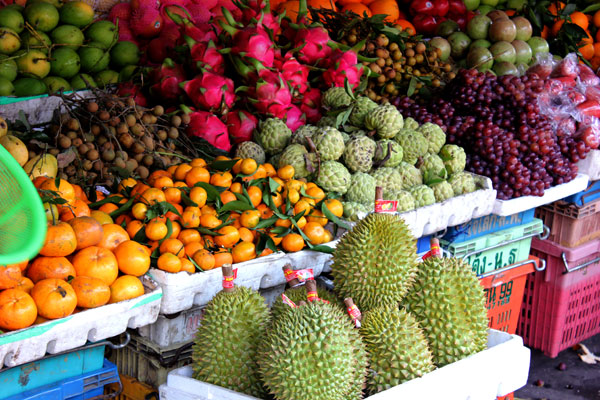
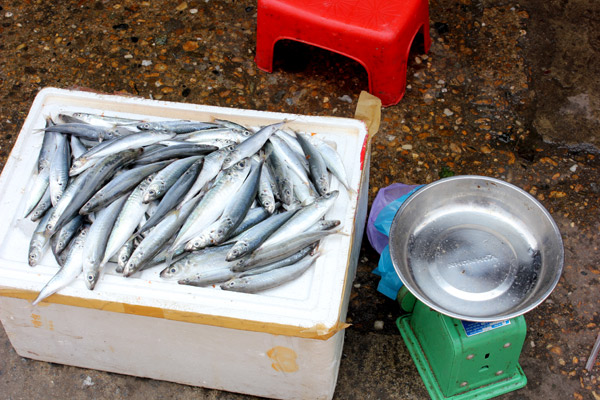
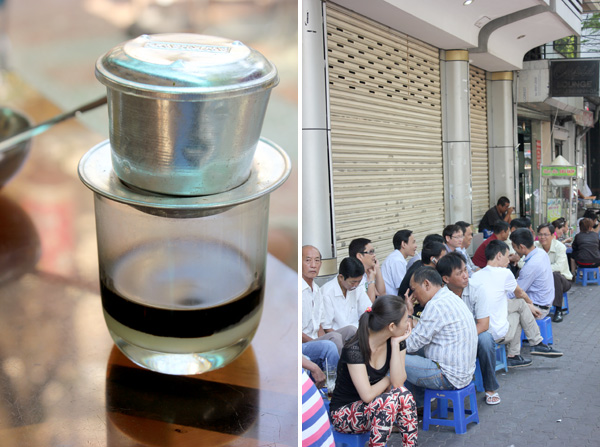
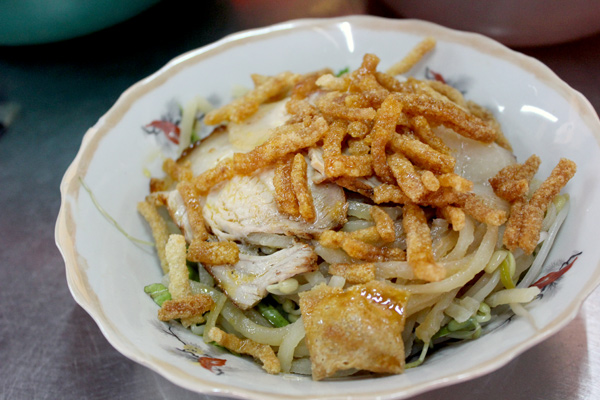
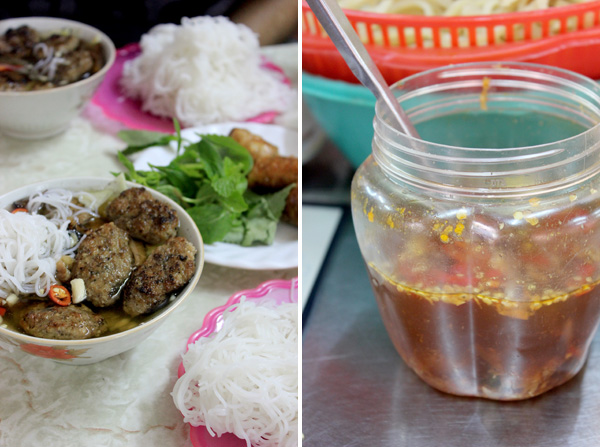
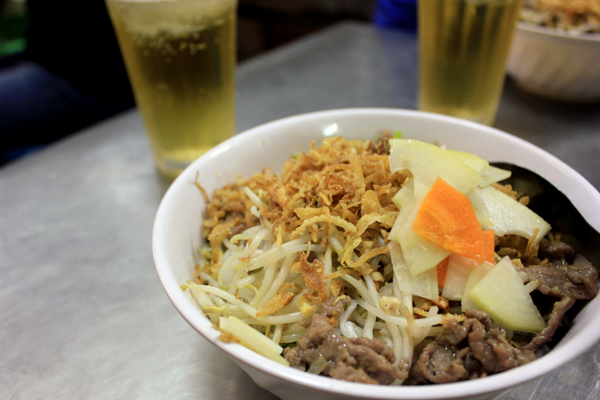
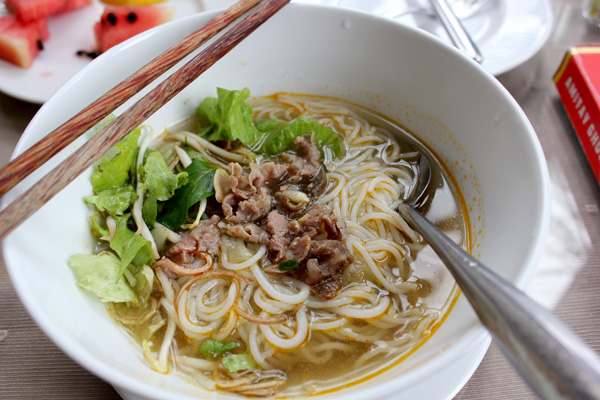
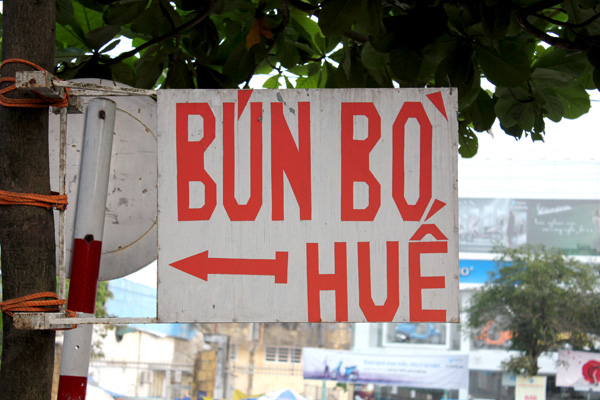
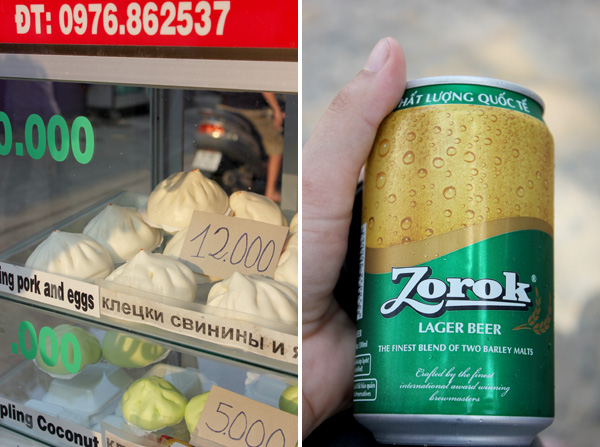
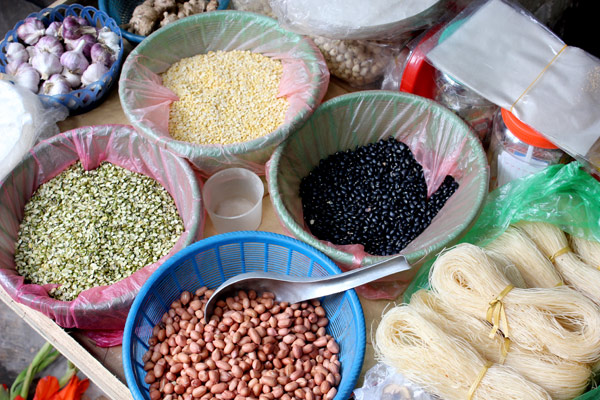
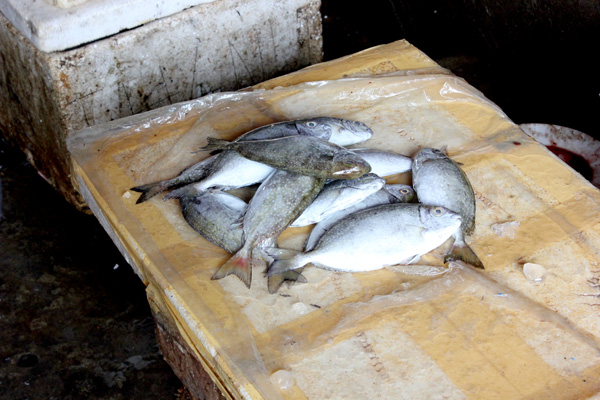
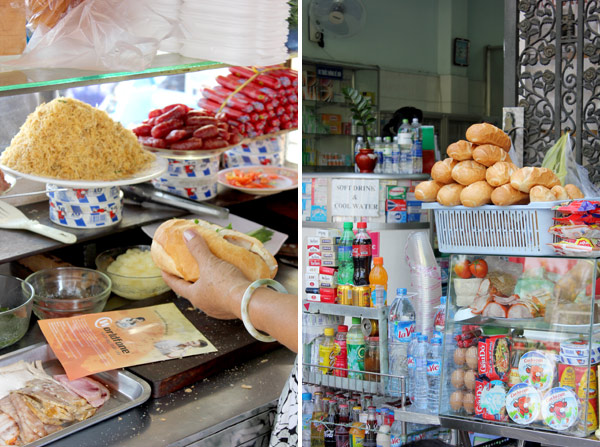
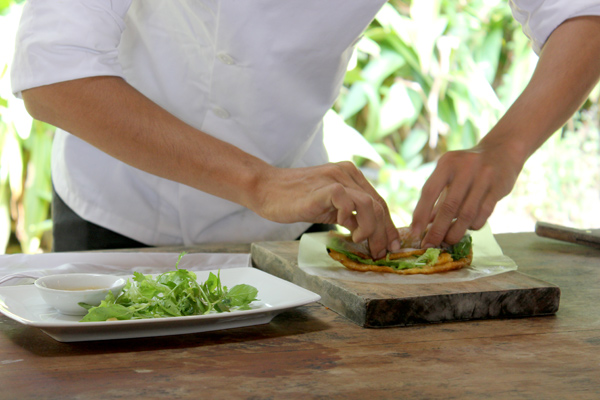
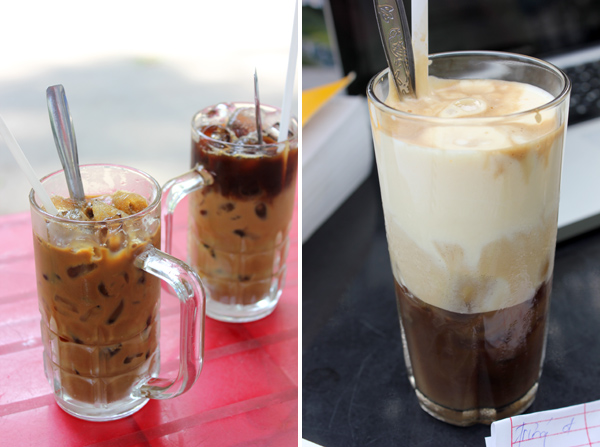
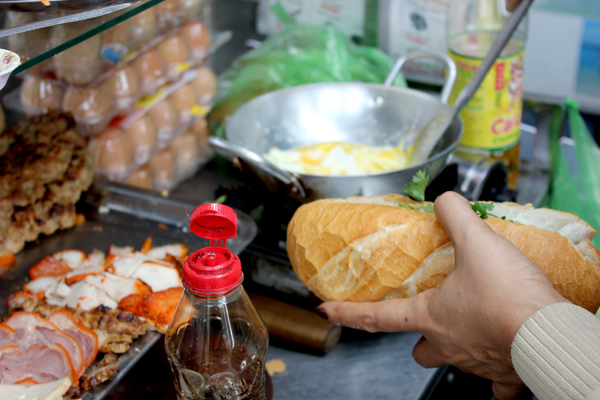
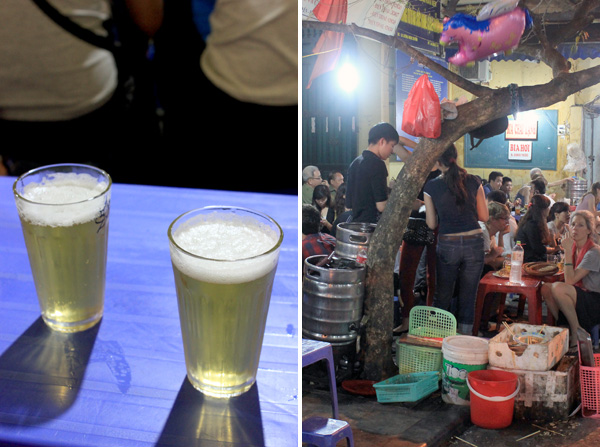





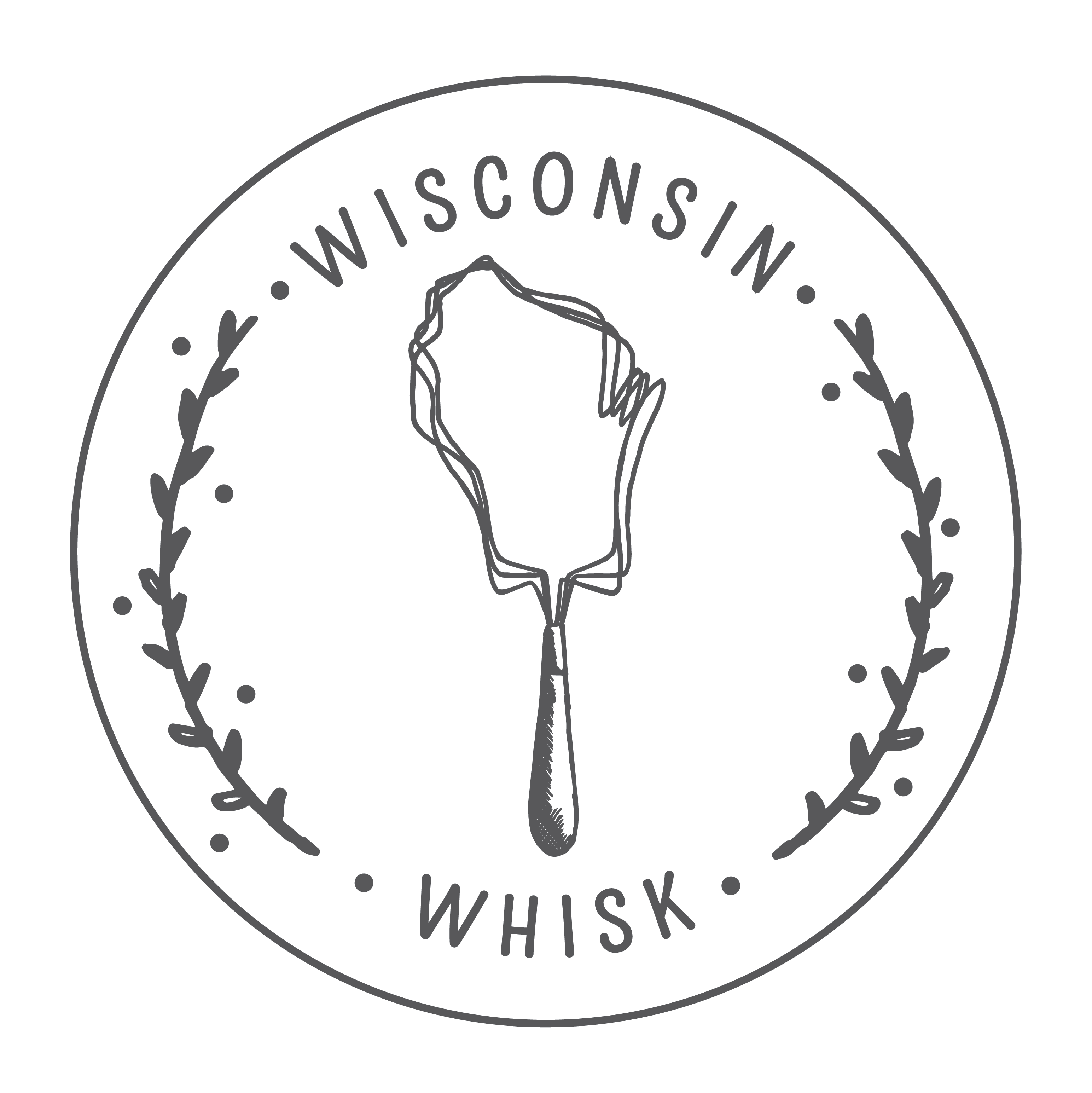


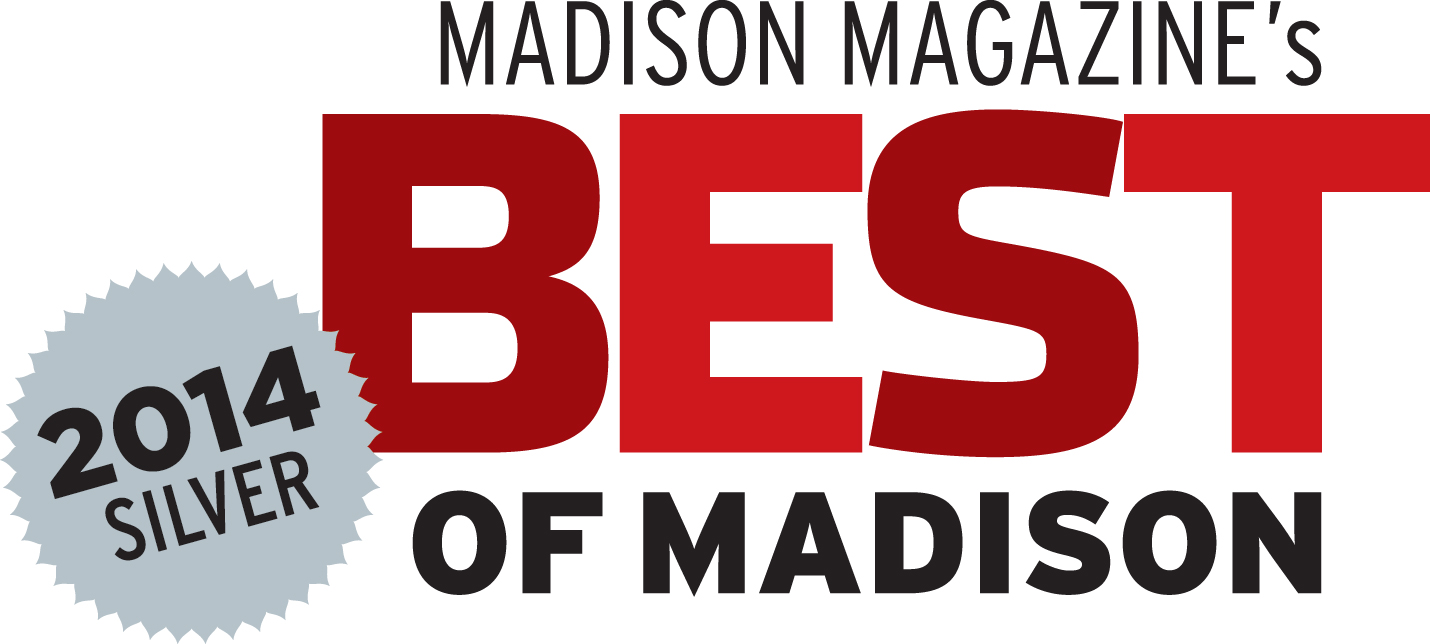
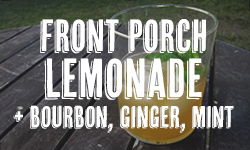
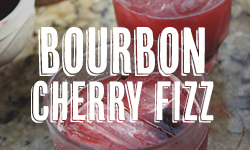
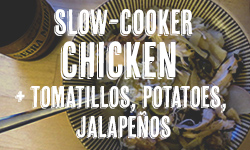
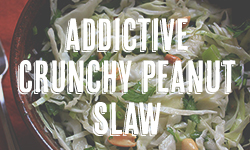
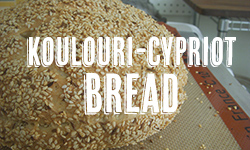
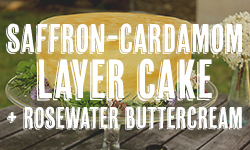
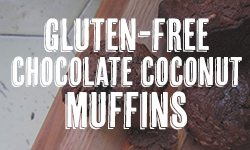
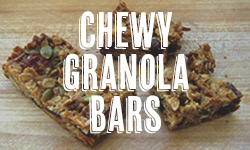
Fabulous photographs!
Thank you!
Everything looks delicious! Do you have any restaurant recommendations for Saigon?
Thanks! We mostly ate from streetside places, which are generally the tastiest but don’t really have names. We were in the Pham Ngu Lao neighborhood, which is where most of the backpacker/tourist stuff is, and that was great (lots of touristy stuff, of course, but in general a good base for exploring the nearby areas of the city). On the corner of Pham Ngu Lao (that’s also the major street) and Do Quang Dau is the pho place we loved. Further down Pham Ngu Lao is ABC Bakery, which was great, and there’s tons of banh mi carts all along the way. Twice we sat in a lovely outdoor cafe in the park between Reunification Palace and Cong Vien Van Hoa Park (between Nguyen Thi Minh Khai, Nam Ky Khoi Nghia, and Cach Mang Thang Tam streets) and drank Vietnamese coffees and it was really a great way to spend an afternoon.
Thanks for the tips, I’m a complete coffee addict, so I’ll certainly be hitting up the outdoor cafes!!
Reblogged this on global_food.
Abso- bloody-lutely brilliant information and photographs. Your excitement and efforts come through splendidly in your posts.
Thank you!